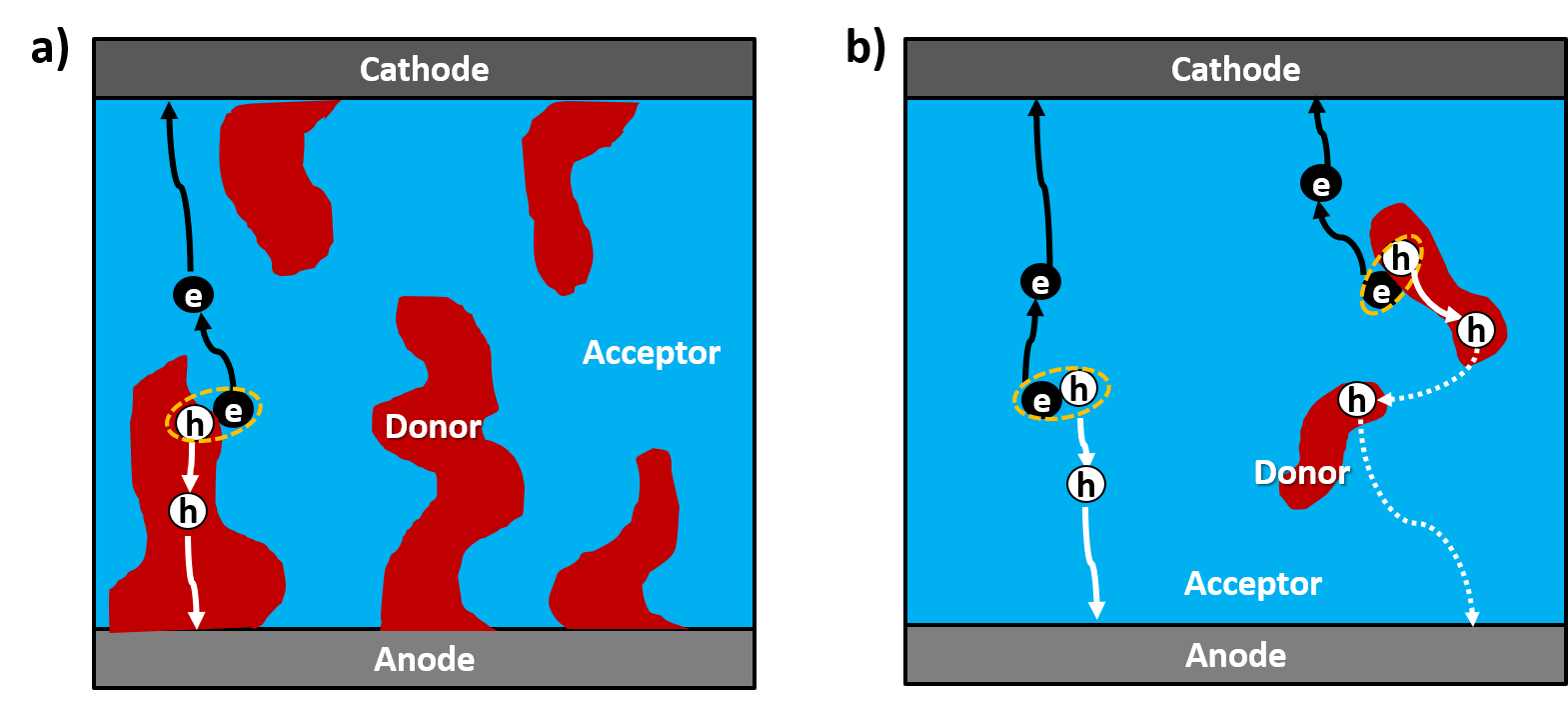Xiaowei Zhan's group and collaborators proposedthe concept of quasi-homojunction (QHJ) organic solar cells (OSCs),foundthatthe QHJ OSCs feature fundamentals distinct from thetraditional bulk heterojunction (BHJ)ones, and the related work was published in Advanced Materials recently.
OSCsare a promising next-generation photovoltaic technology since they own some advantages such as printing fabrication, light weight, flexibility, low toxicity and short energy payback time.Thanks to the development offused-ring electron acceptorslike ITIC and Y6,OSCs have achieved revolutionary breakthrough. Since mostorganic semiconductors have low dielectric constants (ε ~ 3-4),Frenkel excitons with high binding energies rather thanfree charges are generated intrinsically upon photo excitation. Donor (D)/acceptor (A) interfacesthatcanprovideadriving force for exciton dissociation are essential. According to the general consensus developed in fullerene-based OSCs, aBHJwith D/A phase separation size of around 10~20 nmis the optimal morphology for efficient exciton dissociation and charge transport.Accordingly, most high-efficiency optimized OSCs have approximately equal donor and acceptor contents. However, the morphology susceptibility of the BHJ architecture may cause processing complexity, inherent energy loss and morphology instability, which limit device performance and reproducibility.
The authors proposed the concept of QHJ OSCs.In contrast to BHJ,the active layer of QHJ consists ofextremely low donor contents (≤10 wt%) embedded in an acceptor matrix. The authors systematically studied QHJ OSCs based on different polymer donors and FREA acceptors.They found that the PCEs of PTB7-Th:Y6-based OSCs at D:A ratios of 1:8 or 1:20 can retain 95% or 64% of the champion PCE at the optimized D:A ratio of 1:1.2, respectively, whereas QHJ devices with other donors or acceptors suffer from rapid roll-off of efficiency when the donors are diluted. Moreover, these QHJ devices show superior stability compared to their BHJ counterparts. They useda suite of electronic device measurements, current-sensing atomic force microscopy, ultrafast transient absorption spectroscopy and X-ray scattering morphology characterization to elucidate the fundamentals of the high-performance QHJ devices.They found that alarge portion of free charges can be intrinsically generated in the neat Y6 domains rather than at the D/A interface. Y6 also serves as an ambipolar transport channel, so that hole transport can be realized with small amounts of donor PTB7-Th. The key role of the small amount of PTB7-Th is primarily to reduce charge recombination, likely assisted by enhancing quadrupolar fields within the Y6 itself, rather than the previously thought principal roles of light absorption, exciton splitting and hole transport.
This work opensa door fornew OSC structuresbeyond the classical BHJ, where high device efficiency can be realized by improving intrinsic charge generation and reducing charge recombination, rather than only relying on exciton dissociation at D/A interfaces.

Operation mechanismsof a)BHJ andb) QHJ devices.
Paper information:
Quasi-Homojunction Organic Nonfullerene Photovoltaics Featuring Fundamentals Distinct from Bulk Heterojunction
Yifan Wang, Michael B. Price,* Raja Sekhar Bobba, Heng Lu, Jingwei Xue, Yilin Wang, Mengyang Li, Aleksandra Ilina, Paul A. Hume, Boyu Jia, Tengfei Li, Yuchen Zhang, Nathaniel J.L.K. Davis, Zheng Tang, Wei Ma, Quinn Qiao, Justin M. Hodgkiss, Xiaowei Zhan*
https://onlinelibrary.wiley.com/doi/10.1002/adma.202206717